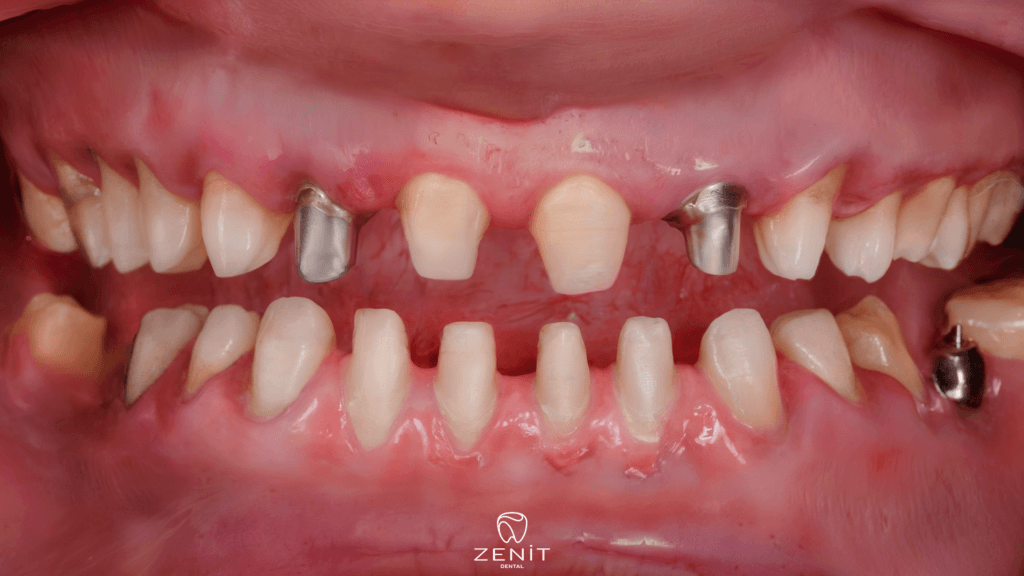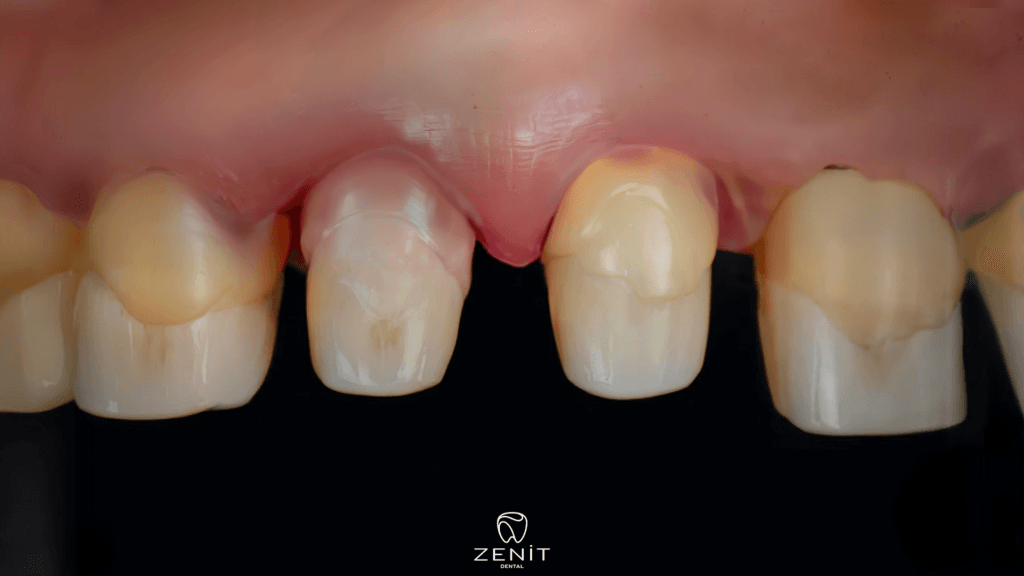Severe Pain After Tooth Cutting
In the field of dentistry, tooth cutting or tooth preparation is an important procedure usually performed to prepare the tooth for various treatment processes. Tooth cutting occurs by removing part of the natural structure on the tooth, and this is done to change the shape and size of the tooth, especially before restorative procedures such as crowns, bridges or veneers. These procedures applied to the tooth are necessary to better adapt the tooth to the area to be treated and to increase the success of the treatment process.
However, pain after tooth cutting can become a common complaint for many people. This pain may occur as a result of the tissue surrounding the tooth being affected during the procedure and changes in the natural structure of the tooth. Additionally, sensitivity after tooth cutting may be caused by the gums and nerves around the tooth being affected. This helps understand the discomfort that may be experienced during the treatment process of a cut tooth and provides patients with information on how to manage this process.
Why is tooth cutting done?
Tooth cutting is a process performed to prepare teeth for various treatment processes. This procedure plays an important role in cases where teeth need to be reconstructed or treated. Thread cutting is commonly performed in the following situations:
- Crown or Veneer Applications: Crown and veneer are restorative materials placed on the upper part of the tooth. Tooth cutting is necessary for better adaptation of these restorative procedures. Before the crown or veneer is placed, some of the natural structure on the top of the tooth is reduced to allow the material to fit properly. This process ensures that the veneer or crown fits harmoniously with the tooth and is long-lasting. Additionally, it improves the external appearance of the tooth and restores the functional properties of the tooth.
- Bridge Applications: Dental bridges are a restoration method used to replace missing teeth. The bridge is placed over healthy teeth to cover the area where one or more teeth are missing. Tooth cutting requires shaping the healthy teeth on which the bridge will sit. This ensures that the bridge fits properly and works harmoniously with the surrounding teeth. Bridge application helps regain missing teeth in aesthetic and functional terms.
- Filling Applications: Dental caries causes damage to the structure of the tooth, and this may require cleaning of large and deep caries. During filling applications, after cleaning the decayed tooth tissue, cuts are made in certain areas of the tooth. This process ensures that the old healthy structure of the tooth is preserved and fillings are placed effectively. Fillings eliminate the effects of tooth decay, allowing the tooth to be used again in a functional and aesthetic way.
Tooth cutting is a critical step to increase the success of such restorative procedures. In all cases, it is important for the dentist to make the correct cut for the efficiency of the treatment process and the comfort of the patient. With proper care and treatment after tooth cutting, patients can achieve the best results from the procedure.

What Causes Pain After Tooth Cutting?
Pain after tooth cutting can be caused by various factors. This pain is usually caused by the changes and effects experienced during and after the procedure. Here are the possible causes of pain after tooth cutting:
- Dentin Sensitivity: During tooth cutting, the outer layer of the tooth, the enamel layer, is removed and the underlying dentin layer is exposed. Dentin is a deeper layer of the tooth and has a structure closer to the nerve endings. If the enamel layer is not protected, the nerve endings on the dentin will be exposed and this may cause sensitivity. Dentin sensitivity can manifest itself as hypersensitivity to hot, cold, sweet or acidic foods. This sensitivity must be managed as part of the post-cutting treatment process.
- Inflammation and Irritation: During teeth cutting, the tissues around the tooth, especially the nerves and vessels inside the tooth, may become irritated. This irritation can cause inflammation, which can lead to pain and discomfort. Inflammation can occur in the soft tissues around the tooth and in the tooth itself, causing continued pain during the healing process. Inflammation must be controlled with appropriate pain management and care throughout the treatment process.
- Inclusive Procedures: Cutting of teeth is often done in conjunction with other invasive dental procedures. For example, after tooth cutting, additional procedures such as crowns, veneers or fillings can be applied to the tooth. Such extensive procedures create greater impact on the tooth and surrounding tissues and can increase the level of pain. Additionally, performing multiple procedures can increase the complexity of the treatment process, which can increase pain and discomfort.
- Gum Damage: Gum tissues may also be damaged during the cutting of teeth. Irritation or cutting of the gums can lead to gingivitis and pain. Gum damage can cause pain and tenderness in the soft tissues around the tooth. This may affect the healing process of the gum tissues and require additional care. Regular oral hygiene and dentist recommendations should be followed to maintain gum health and support the healing process.
To manage pain after cutting teeth, methods such as painkillers recommended by the dentist, hot and cold compress applications and regular oral care can be used. Additionally, staying in touch with your dentist about the severity and duration of pain can help you get additional treatment or support when needed.
How to relieve pain after tooth cutting
Management and treatment of pain after teeth cutting may vary depending on the cause of the pain. Here are some common treatments:
- Painkillers: Over-the-counter painkillers such as ibuprofen or acetaminophen can be effective in relieving pain. Your dentist may also recommend stronger painkillers.
- Desensitizing Toothpastes: Desensitizing toothpastes can reduce sensitivity by closing exposed dentinal tubules.
- Fluoride Treatment: Fluoride gels or varnishes can reduce sensitivity by strengthening the mineral structure of the tooth.
- Antibiotics: If the pain is caused by an infection, your dentist may recommend antibiotic treatment.
Gum Care: You can use antiseptic mouthwashes and soft toothbrushes to protect your gum health.
Methods That Can Be Applied at Home
You can also apply some methods at home to relieve pain after cutting teeth:
- Cold Compress: You can apply cold compresses to reduce swelling and pain.
- Salt Water Gargle: Gargling with warm salt water can reduce the risk of infection and soothe gums.
- Mindful Nutrition: You can reduce sensitivity by avoiding very hot, cold, sweet or acidic foods.

When Should You Consult a Dentist?
Pain after teeth cutting usually subsides within a few days. However, if the pain becomes severe and persistent or there are signs of infection such as fever, intense swelling and discharge, you should contact your dentist immediately. These symptoms may be a sign of a more serious problem and may require professional treatment.
Severe Pain After Tooth Cutting Severe Pain After Tooth Cutting Severe Pain After Tooth Cutting Severe Pain After Tooth Cutting Severe Pain After Tooth Cutting Severe Pain After Tooth Cutting Severe Pain After Tooth Cutting Severe Pain After Tooth Cutting Severe Pain After Tooth Cutting Severe Pain After Tooth Cutting Severe Pain After Tooth Cutting Severe Pain After Tooth Cutting






